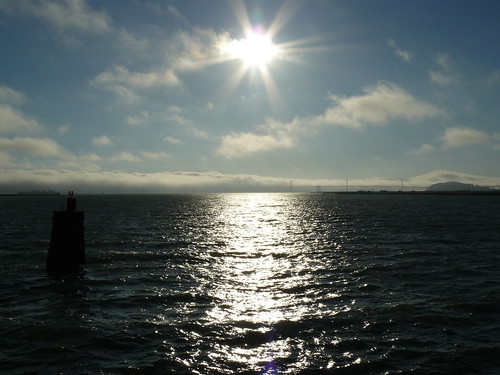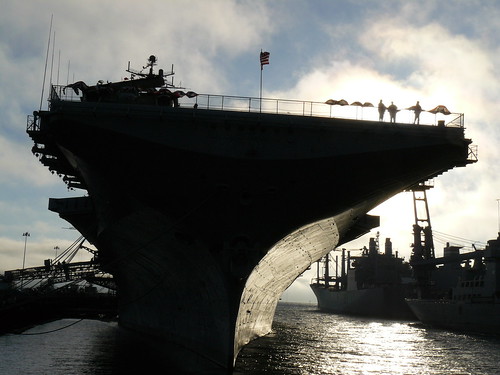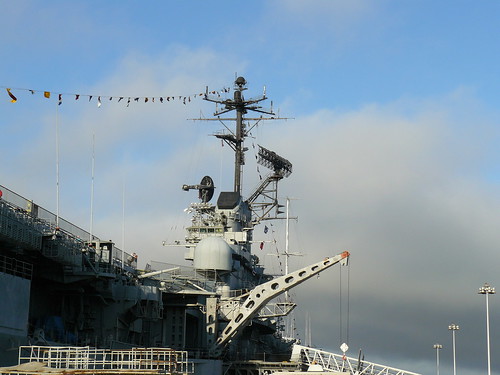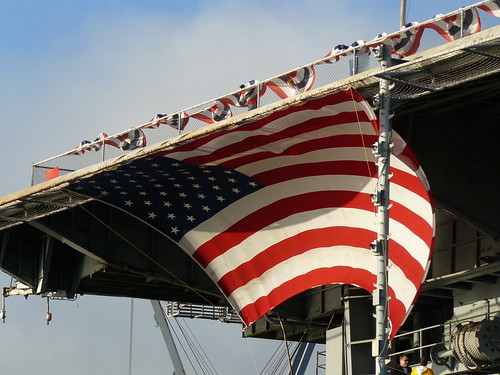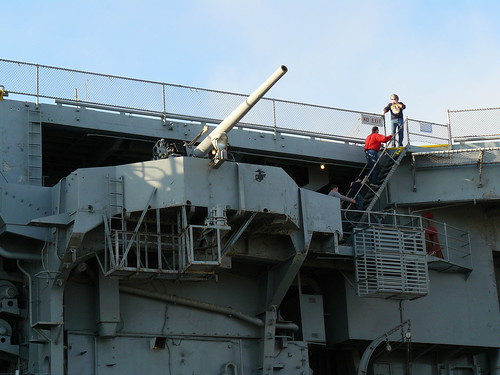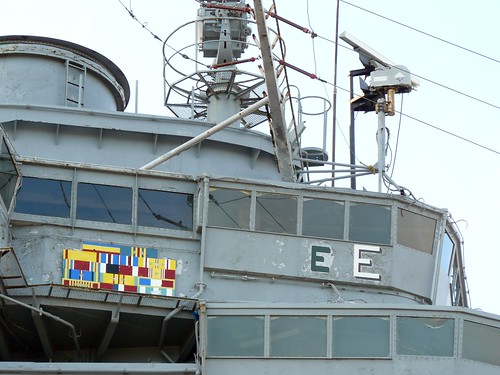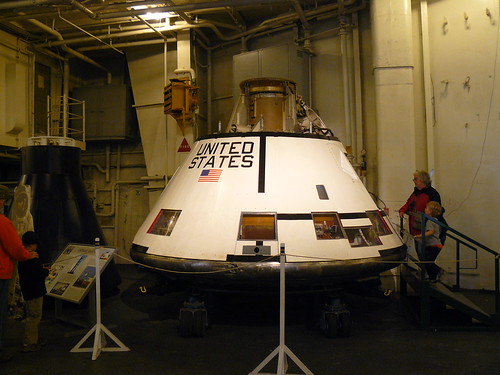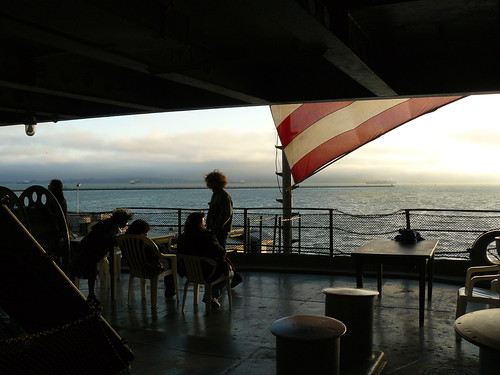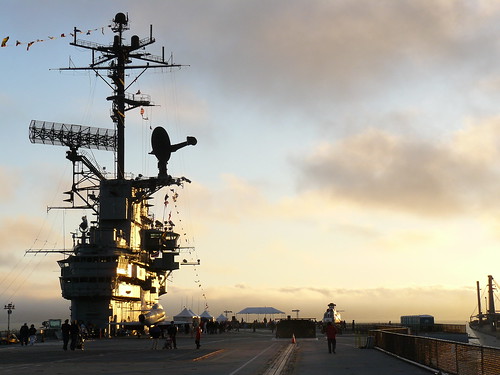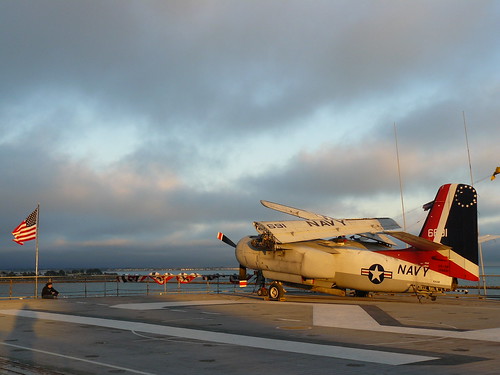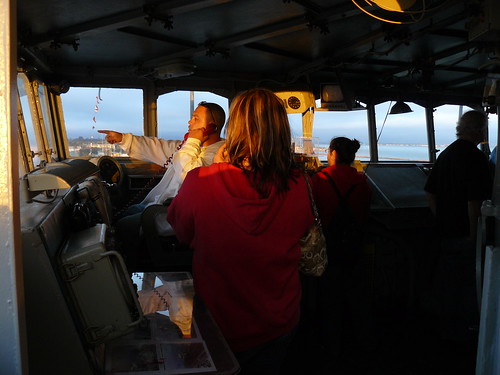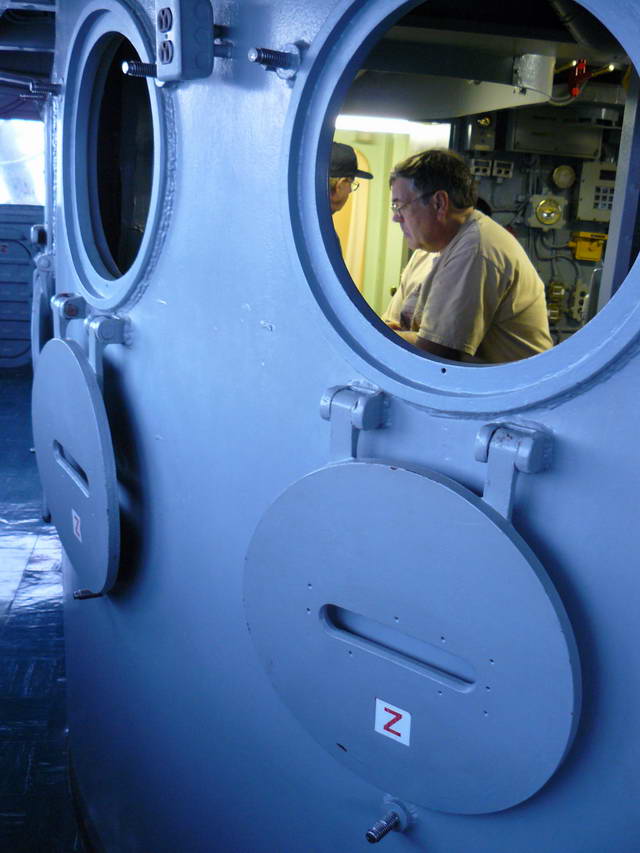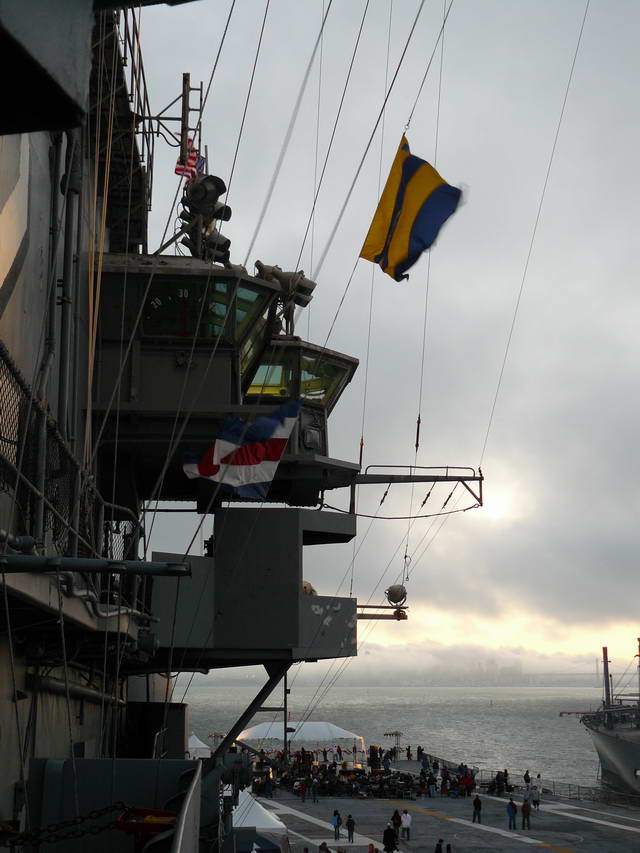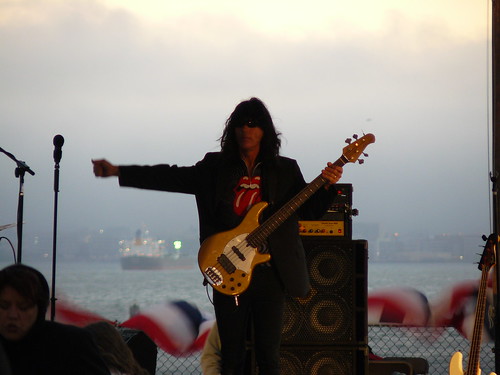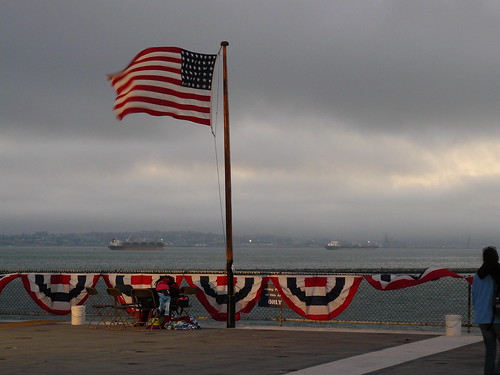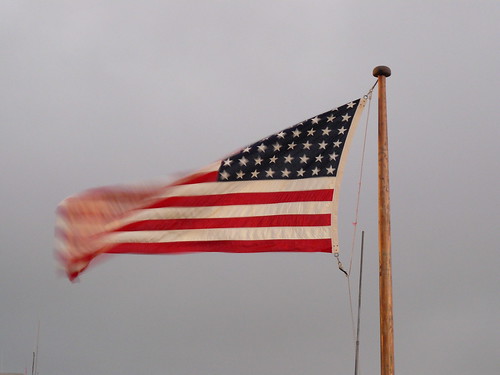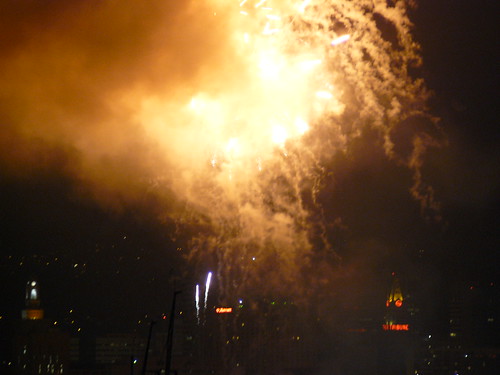|
|
Blogroll
|
|
Most recent articles |
|
Highlights |
|
States and Economies |
|
World economies: 15 of 50 largest economies are U.S. States: |
|
World States – Table 1 |
|
History and Society |
|
Fourth of July aboard the W.W. II aircraft carrier the U.S.S. Hornet |
|
A. L. Kroeber's The Civilization of California's Far Northwest |
|
The Arab Admiralty – and an Arab naval view of the Crusades |
|
Excerpt from “The Wife of Bath's Prologue” by Geoffrey Chaucer |
|
“Horsey” Vikings: exploring origin of the “Rohirrim” in The Lord of the Rings
|
|
The Battle of Crécy by Winston S. Churchill |
|
Monotheistic Paganism, or just what was it Christianity fought and faced? |
|
Medieval constipation advice for travelers: “A ripe turd is an unbearable burden” |
|
Alexis de Tocqueville's bicentennial: Anticipatory censorship in colonial America |
|
Antiquity vs. Modernity: Alexis de Tocqueville on the mind of the slaveholder vs. soul of America |
|
Federalism, and Alexis de Tocqueville on the origins of American democracy |
|
Science, Technology, Space |
|
Looking in the right direction – towards the future – with regard to global warming |
|
Know Your Neighborhood: from Andromeda to Fermions and Bosons |
|
Magnetars and Pulsars: Science's special section on pulsars |
|
The Geneva-Copenhagen Survey of Sun-like Stars in the Milky Way |
|
Galactic Central: the Black Hole at the Center of the Galaxy |
|
Politics and War |
|
America’s strong arm, wielding the Sword of Iraq, slays the multi-headed Hydra of Al Qaeda |
|
Regional and Personal |
|
Tamara Lynn Scott |
What wailing wight
Calls the watchman of the night?
William Blake
Whirl is king
Aristophanes
“Jumping into hyperspace ain't like dustin' crops, boy.”
Han Solo, another galaxy
|
Blogroll |
|
Grand Central Station |
|
Legal and Economic |
|
History and Society |
|
Science, Technology, Space |
|
Politics and War |
|
Eclectic |
|
Regional |
|
Reciprocal |
© Copyright 2002 – 2009
Michael Edward McNeil
Impearls: 2009-06-28 Archive
Earthdate 2009-07-04
| Fourth of July, 2008, aboard the W.W. II aircraft carrier the U.S.S. Hornet |
|
|
San Francisco Bay to the west of the Naval Air Station in Alameda, facing S.F. |
Fourth of July, 2008, aboard the W.W. II aircraft carrier the U.S.S. Hornet
There was concern arriving in the area that day that it would be thoroughly socked in (and thus cold and dreary) with San Francisco's famous fog, but even though great tongues of fog had pushed via the considerable onshore breeze some distance to the north and south of the U.S.S. Hornet's permanent home (at the Naval Air Station on the island of Alameda, California, along the eastern shore of San Francisco Bay) — and while the city of San Francisco to be seen across the bay was almost completely enveloped in it, fortunately however the day actually experienced in the environs of the Hornet itself was beautifully sunny; though with the typical stiff cold onshore breeze emerging out of that fog bank (I wore an overcoat and was glad of it, many others there that day did too).
(In these shots, as usual, simply click on an image to link to a substantially larger version of it….)
|
The illustrious aircraft carrier the U.S.S. Hornet (CV-12), commissioned 1943 |
Even considering that there are much more substantial (and nuclear-powered) aircraft carriers operating these days, it's still amazing seeing, not to speak of hoofing it from one end to the other and back again (several times) on, this historic old warship: basically several city blocks' of artificial territory placed end-to-end, several high decks deep bearing huge aircraft-carrying elevators, mounting massive engines (wish I could have seen them), thereafter set afloat to steam as an artificial steel island mounting a powerful mobile naval airfield (the pinnacle in military technology during its heyday) round the world's oceans and seas. Impressive isn't the word for it.
|
Antiaircraft artillery emplacement along the edge of the mobile military airfield |
|
The Hornet's bridge, together with its ship's decorations |
The U.S.S. Hornet (CV-12) had an illustrious career. Its namesake predecessor, the seventh American Hornet (CV-8), fought in the Pacific war's desperate turning-point Battle of Midway, afterwards going down to the bottom in the Battle of Santa Cruz later in 1942. Launched in 1943, its replacement, the eighth, now Essex-class Hornet, the instance before us, as the ship's museum web site notes, accomplished the following:
- For 16 continuous months she was in action in the forward areas of the Pacific combat zone, sometimes within 40 miles of the Japanese home islands.
- Under air attack 59 times, she was never hit.
- Her aircraft destroyed 1410 Japanese aircraft, only ESSEX exceeded this record.
- Her air groups destroyed or damaged 1,269,710 tons of enemy shipping.
- 10 HORNET pilots attained “Ace in a Day” status.
- 30 of 42 VF-2 Hellcat pilots were aces.
- 72 enemy aircraft shot down in one day.
- 255 aircraft shot down in a month.
- Supported nearly every Pacific amphibious landing after March 1944.
- Scored the critical first hits in sinking the super battleship YAMATO.
- In 1945 launched the first strikes against Tokyo since the 1942 Doolittle Raid.
“A HERITAGE OF EXCELLENCE” is the ship's creed:
- Earned 9 battle stars for her service in WWII.
- Awarded the Presidential Unit Citation for her WWII operations (only nine carriers so cited).
- Flawlessly recovered the Apollo 11 and Apollo 12 astronauts, the first men on the moon; 1969.
- USS HORNET (CVS-12) is designated a National Historic Landmark; 1991.
- HORNET opens to the public as an aircraft carrier museum in Alameda, California; 1998.
- USS HORNET is designated a State Historic Landmark; 1999.
- The F/A-18 strike fighter carries on the name of HORNET in today's NAVY.
The Hornet's extensive resume is also presented graphically within the carrier's high-rising hanger deck:
|
Battle resume of the U.S.S. Hornet (CV-12) |
|
Emblems of some of the U.S.S. Hornet's World War II Essex-class sister ships |
The kind of extreme action the Hornet and its sisters and kin experienced during World War II makes fond illusions about a “quagmire” in the present war in Iraq seem badly misplaced (especially now that the war there is winding down and nearly won). [Written in July of 2008; now of course that prognosis has simply been confirmed by an additional year's events.]
|
The Hornet's vast hanger deck serves today as a museum of naval aviation |
After such notable and terrific service during World War II, the Hornet entered into a second life during the fifties and sixties (performing antisubmarine-warfare carrier duty during that period, for instance), then directly supporting the Gemini and Apollo Moon program, ultimately retrieving the first two expeditions to visit surface of the Moon — Apollos 11 and 12 — from the sea, following their fireball return to this planet.
|
Apollo lunar command module presentation, on the Hornet's hanger deck |
Following their return from visiting the surface of the Moon, the Apollo astronauts spent a preplanned few weeks in a quarantine facility, as a precaution against the very remote eventuality that some dread malady could have been acquired by the astronauts during their visit to the (with little doubt) sterile surface of the Moon. As expected there was no such contagion.
|
NASA Mobile Quarantine Facility, for isolating lunar astronauts after their return |
It looks like a modified “Airstream” trailer, actually — I wonder if that's what NASA did? (A fellow can be seen examining a display of a moon rock just in front of the entrance.)
|
Kids play on the Hornet's hanger-deck stage |
In the relaxed atmosphere of the Hornet's hanger deck (where the hectic though pleasant vibes of the band up atop the flight deck seemed far away), Kids enjoyed playing at hamming it up on the Hornet's flag-draped stage — while their doting parents oftentimes stood out in the “audience” videotaping them against the starry-striped backdrop.
As a result of various instances of blurred motion, one can see that no was flash used anywhere during this visit to the Hornet — even in quite low-light situations — though the Panasonic DMC-FZ8 camera employed does possess a built-in flash, which generally works adequately well. Didn't turn out too bad, I'd have to say, though in retrospect I might have used the flash on a couple of occasions (such as for the fireworks -- just joking; actually what the fireworks could have used was turning off autofocus, while setting manual focus to infinity; along with mounting the camera on a tripod.)
For those occupying the stern end of the great aircraft carrier's hanger deck, folks enjoyed a relaxing (if bracing) view overlooking San Francisco Bay….
|
Looking out Hornet's hanger-deck stern overlooking San Francisco Bay |
Thereafter, whilst angling through various narrow passageways and clambering up and down steep ship's stairs aboard the old steel warcraft, one closely encounters the antiaircraft cannon glimpsed from dockside before….
|
Antiaircraft artillery position on the U.S.S. Hornet |
Ah, just the thing for an American gun-lover's back (or maybe front) yard! That ought to deal with all those naggling drive-by shootings! (/attempted humor)
One might note that in the recent U.S. Supreme Court decision issued just the other day concerning the Constitution's Second (gun rights) Amendment, all nine Justices (including those appointed by liberal presidents) affirmed (with some variance from the majority 5-4 opinion concerning the extent of resulting legal protections, but unanimously as to) the basic individual rights interpretation of the original intent of the American founding fathers in composing the Second Amendment. As a result, the “collective rights” interpretation — whereby for decades legal “experts” solemnly intoned that when it said “the right of the people” it really meant “the right of the state(s)” — is now officially dead as a doornail. It is an individual right to keep and bear arms that the U.S. Constitution guarantees — though admittedly (and thankfully) that right does not extend to such things as personal WMD.
|
The command “Island” rises above the Hornet's flight deck |
Once up on the flight deck, the aircraft carrier's commanding “Island” rises like an arcane metallic crag + treehouse, or vertical mandala, above the flattop “plateau.” (We're viewing the sternward-facing side of the island, opposite the bridge per se. The windowed area visible on this side isn't the ship's bridge proper but rather, I believe, controlled flight operations.) Hanging off the tower above, flags flap, and radar antennae rotate, like watchful eyes. On the left, today, kiosks provide refreshments.
|
Diagonal view of the Hornet's commanding Island |
My ex-wife Tamara appears in the shot above, at lower right with her TV production camera, wearing my Ecuadorian poncho for warmth….
|
The Hornet's flight deck stretches out like a long, flat plateau |
|
The bow of the flight deck on the Hornet |
The bow of the aircraft carrier's flight deck, at the exact opposite end from where the band was set up, was a bit lonely during the celebration — until, later, the city of Oakland's fireworks commenced, that is!
Ascending into the Island into the Hornet's Bridge, one obtains great views looking down on the flight deck and surrounding terrain….
|
Looking out from the Hornet's bridge toward the bow of the great ship |
|
In the captain's chair on the U.S.S. Hornet's bridge |
“Captain James Cook,” er… “Kirk” issues an order on his communicator — “Warp factor eight, Scotty…!” (or should that be, “Full steam ahead!”).
In the bridge, the pilothouse receives some special armor protection, but the outer area, ringed by windows, does not:
|
Armor surrounding the pilothouse on Hornet's bridge |
|
In Hornet's pilothouse on the bridge |
Descending from the bridge, the sun was close to setting at that point in the bank of fog, whilst near the stern of the flattop, the band played on….
|
View from walkway leading to Hornet's bridge, of the stern, band, and bay |
|
The band pavilion at the stern of the Hornet |
As the sun set behind the fog bank and lights began coming on across the bay, the final band, the “Unauthorized Rolling Stones” — not a military or marching band, one might note, like the other bands playing that day — finished up its set. As their name implies, specializing in Rolling Stones compositions, and not doing too bad a job on them I'd say, they performed a number of oldies from other groups as well. (I don't recall them doing the Stones' “20,000 light years from home” though, which this ship certainly makes me think of — as an analogy to the “Starship Enterprise” in Star Trek — indeed, there is an in-commission U.S. nuclear-powered aircraft carrier today called the U.S.S. Enterprise ….)
|
Lights alight across the bay as the band completes its set |
Notice in the background of the last shot above how the Transamerica Pyramid skyscraper pokes up out of the top of the fog bank, above San Francisco's foggy cityscape.
Behind the band, at the stern end of the flight deck facing San Francisco Bay, a remembered flag flaps in the breeze…. Note the number and pattern of stars. This is the 48-star flag that the Hornet fought under during World War II — and in the fifties, during the Korean War.
|
A remembered flag waves in the breeze |
The evening ended with spectacular fireworks in several directions — except the direction of San Francisco, whose own fireworks were lost in the fog — with just an occasional flash, like distant lightning, visible from that direction. Other points of the compass held greater wonders:
|
Fireworks over Oakland, from the flight deck of the Hornet |
That one kind of looks like a Hubble Space Telescope photo, no? The Orion Nebula….
After that there was nothing to do but join the hour-long traffic jam getting off Alameda island and onto the freeway heading towards home.
Labels: aircraft carrier, Alameda, Apollo Program, Fourth of July, San Francisco, San Francisco Bay, US Navy, USS Hornet, World War II
| (Blank last screen) |
|
2002-11-03 2002-11-10 2002-11-17 2002-11-24 2002-12-01 2002-12-08 2002-12-15 2002-12-22 2002-12-29 2003-01-05 2003-01-12 2003-01-19 2003-01-26 2003-02-02 2003-02-16 2003-04-20 2003-04-27 2003-05-04 2003-05-11 2003-06-01 2003-06-15 2003-06-22 2003-06-29 2003-07-13 2003-07-20 2003-08-03 2003-08-10 2003-08-24 2003-08-31 2003-09-07 2003-09-28 2003-10-05 2003-10-26 2003-11-02 2003-11-16 2003-11-23 2003-11-30 2003-12-07 2003-12-14 2003-12-21 2003-12-28 2004-01-04 2004-01-11 2004-01-25 2004-02-01 2004-02-08 2004-02-29 2004-03-07 2004-03-14 2004-03-21 2004-03-28 2004-04-04 2004-04-11 2004-04-18 2004-04-25 2004-05-02 2004-05-16 2004-05-23 2004-05-30 2004-06-06 2004-06-13 2004-06-20 2004-07-11 2004-07-18 2004-07-25 2004-08-22 2004-09-05 2004-10-10 2005-06-12 2005-06-19 2005-06-26 2005-07-03 2005-07-10 2005-07-24 2005-08-07 2005-08-21 2005-08-28 2005-09-04 2005-09-11 2005-09-18 2005-10-02 2005-10-09 2005-10-16 2005-10-30 2005-11-06 2005-11-27 2006-04-02 2006-04-09 2006-07-02 2006-07-23 2006-07-30 2007-01-21 2007-02-04 2007-04-22 2007-05-13 2007-06-17 2007-09-09 2007-09-16 2007-09-23 2007-10-07 2007-10-21 2007-11-04 2009-06-28 2009-07-19 2009-08-23 2009-09-06 2009-09-20 2009-12-13 2011-03-27 2012-01-01 2012-02-05 2012-02-12
